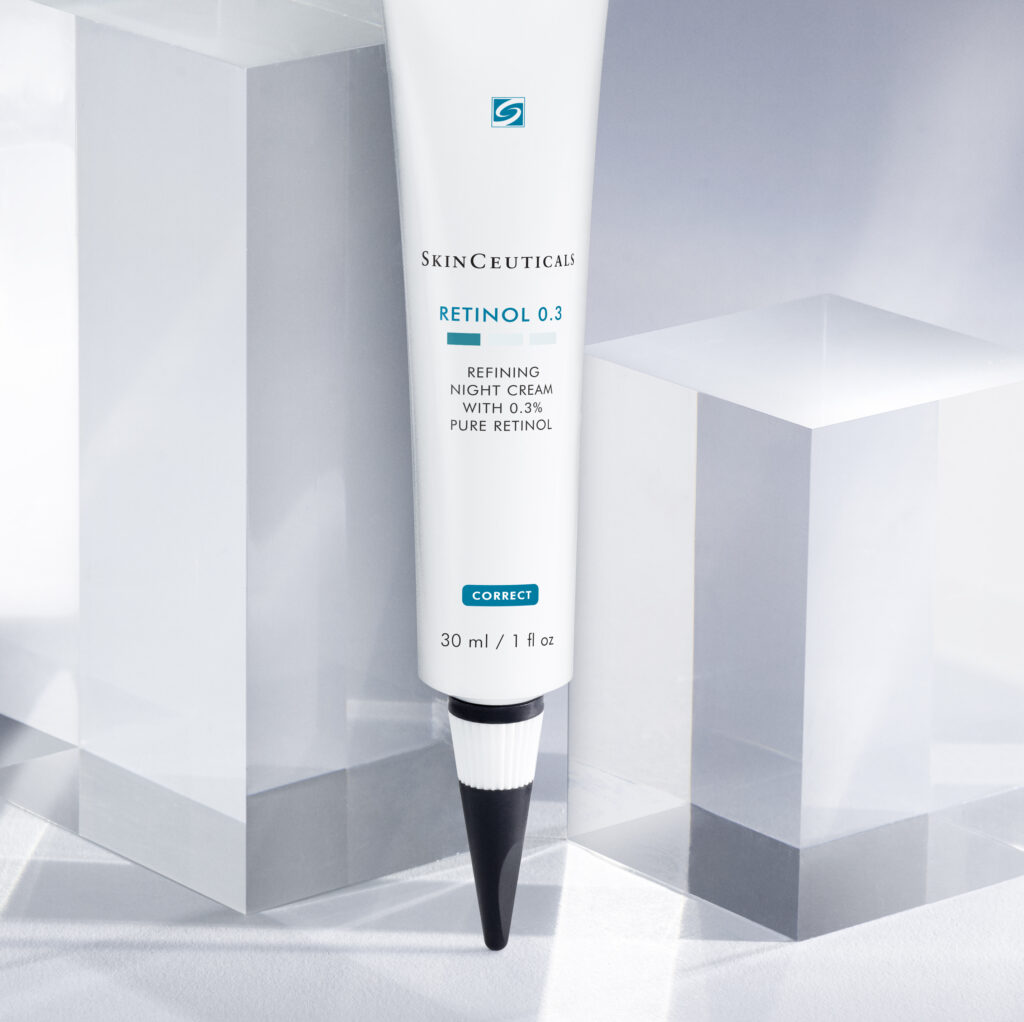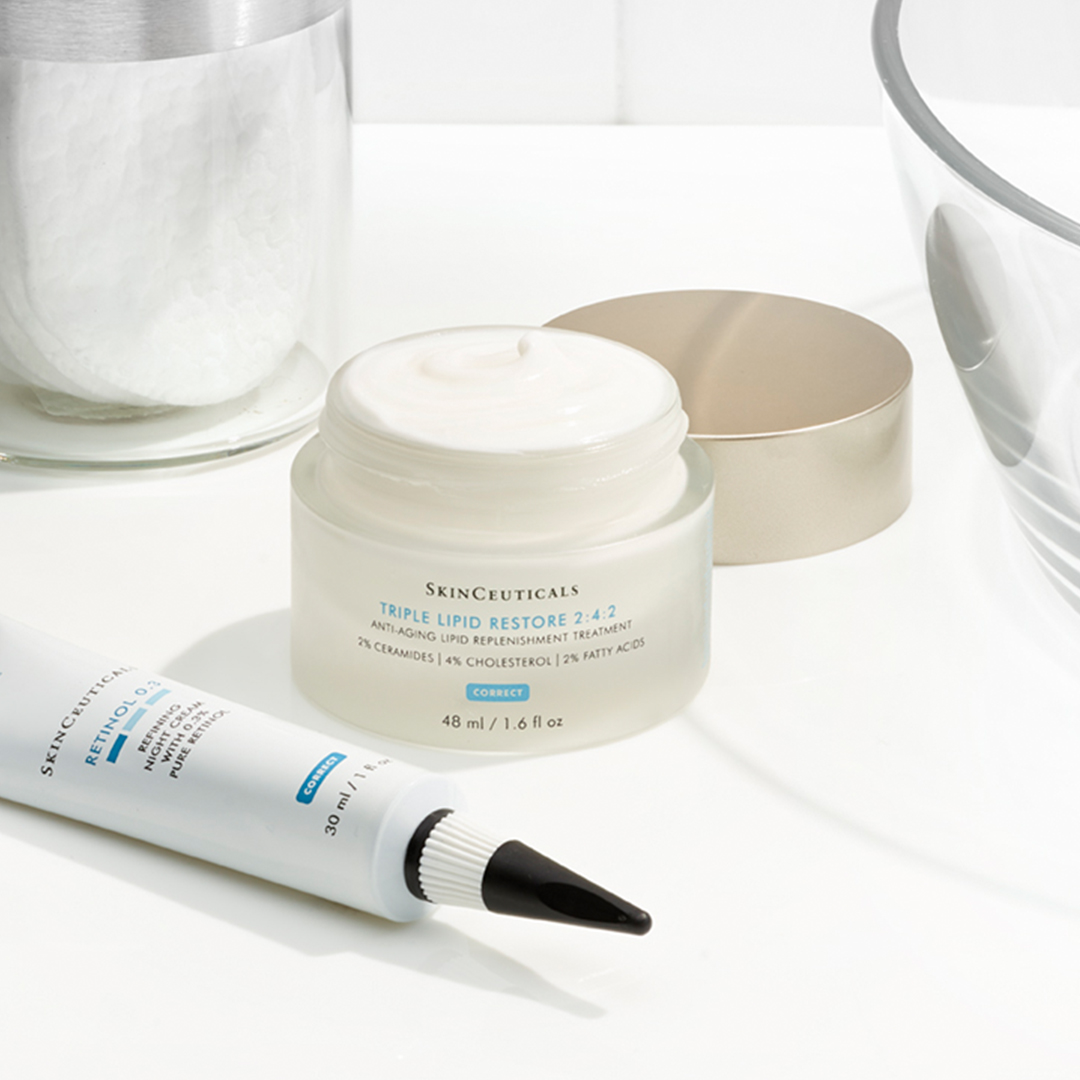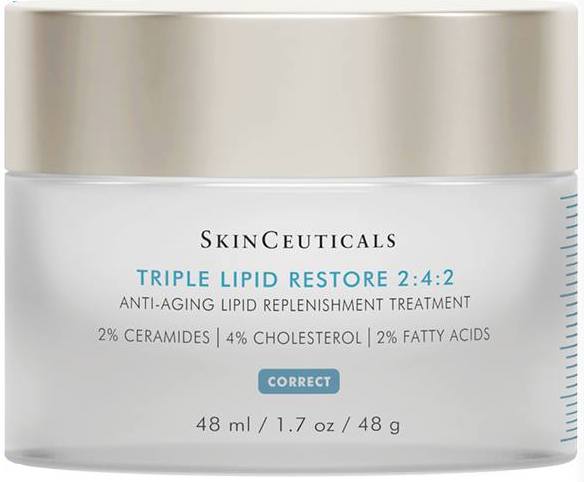
Keep Retinol in Your Winter Skincare Routine – Waccamaw Dermatology Skin Institute
Don’t Drop Retinol This Winter
 Winter’s cold temperatures, wind, and low humidity can dry out and irritate your skin. Because retinol can sometimes cause drying, you might be tempted to take it out of your skincare regimen during the colder months. But retinol’s ability to encourage cell turnover and boost collagen production can play a key role in battling the signs of aging, so why take it out of your winter skincare routine?
Winter’s cold temperatures, wind, and low humidity can dry out and irritate your skin. Because retinol can sometimes cause drying, you might be tempted to take it out of your skincare regimen during the colder months. But retinol’s ability to encourage cell turnover and boost collagen production can play a key role in battling the signs of aging, so why take it out of your winter skincare routine?
The truth is that you shouldn’t.
“Retinol increases cell turnover, meaning that it sheds off dead skin cells to stimulate new skin growth,” notes Ashleigh Kinon, NP-C at Waccamaw Dermatology Skin Institute. “Stimulating new skin growth helps achieve fewer wrinkles and brighter, more even skin tones. Typically, the UV rays are lower in the winter months, so patients are less likely to have sun sensitivity than in the summer months.”
So, you don’t have to ditch its benefits. The fact is, when used properly, you can experience retinol’s benefits in winter—and all year long.
How Retinol Works
Retinol, a type of retinoid, is derived from vitamin A. It permeates your epidermis—the skin’s outer layer—to reach your dermis. Once it’s in that middle layer, retinol works to neutralize free radicals, which boosts the production of collagen and elastin. That, in turn, creates a plumping effect that can help reduce the appearance of wrinkles, fine lines, crow’s feet, enlarged pores, and other signs of aging. It also has an exfoliating effect on the skin’s surface that can help improve tone and texture.
Including Retinol in Your Winter Regimen
No one nighttime skincare routine is the same for every face, but there are some consistent, foundational steps (including how best to use retinol):
- Cleanse. In the winter, use a gentle, sulfate, alcohol, and phthalate-free cleanser with warm water. Hot water can be drying.
- Serum. Because serum is light, it’s easily absorbed by the skin, and a hydrating serum, one with hyaluronic acid, for example, can help moisture reach your skin’s deeper layers.
 Moisturize. The thicker formulas found in moisturizers help create a physical barrier that locks in hydration, prevents skin from drying out, and bolsters your skin’s outer moisture barrier.
Moisturize. The thicker formulas found in moisturizers help create a physical barrier that locks in hydration, prevents skin from drying out, and bolsters your skin’s outer moisture barrier.
“We recommend that SkinCeuticals Triple Lipid Moisturizer be paired with a retinol,” says Kinon. “It contains three essential lipids—ceramides, cholesterol, and fatty acids—that help restore the skin barrier that retinols disrupt. Meaning, it helps with the shedding side effects from the retinol, making skin more tolerant.”- Apply retinol. “Retinols should be used at night. I typically tell my patients to wait 30 minutes before adding a moisturizer,” Kinon advises. “However, if you’re experiencing dryness from cell turnover, you might want to mix your retinol with the moisturizer, which makes the retinol less potent.”
- Oil. During the winter, oils can help soothe any type of skin, dry or oily. They can also help retain moisture.
- SPF. You might be bundled up, but the sun’s UV rays aren’t any weaker. You still need protection.
For step 4, if you’re concerned about dryness, you can take another approach to Kinon’s mixing suggestion by considering “sandwiching,” or doubling up on moisturizer by adding another layer after the retinol. In addition, it helps to exfoliate once or twice a week.
Final Thoughts
Kinon offers a few more tips and caveats on retinol use.
“Retinols can be used on all skin types: dry, oily, and combination skin. It’s especially helpful for discoloration, acne, and aging skin,” she says. “If your cell turnover is high and you’re experiencing dryness, use retinol every other night and slowly increase to nightly to allow your skin to build up a tolerance,” she says. “I also recommend using the triple lipid moisturizer one or two times daily outside your routine, depending on the dryness you experience.”
To learn more about retinols, moisturizers, and more, visit the Waccamaw Dermatology Skin Institute’s website.
Featured
- What is Contact Dermatitis?
Jul 18, 2024
- June is Acne Awareness Month
May 31, 2024
- Benefits of Individualized Skin Cancer Treatment
May 7, 2024
- Busting Myths About Fillers and Injectables
Apr 18, 2024
- Keep Retinol in Your Winter Skincare Routine – Waccamaw Dermatology Skin Institute
Jan 12, 2024
- Waccamaw Dermatology Skin Institute Holiday Gift Guide
Dec 13, 2023
- Our Not-So-Secret Summer Skincare Tips
Jul 11, 2023
- Spring Skincare Tips to Restore Your Skin
Mar 21, 2023
- Six Undeniable Benefits of Botox
Mar 1, 2023
- Skincare Trends: Turning Skincare into Self-Care
Feb 9, 2023